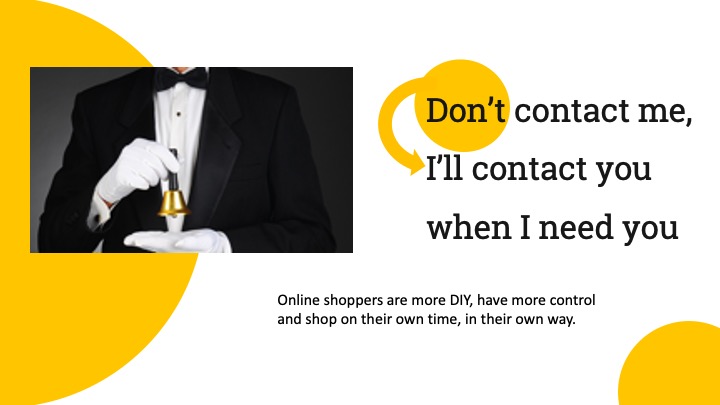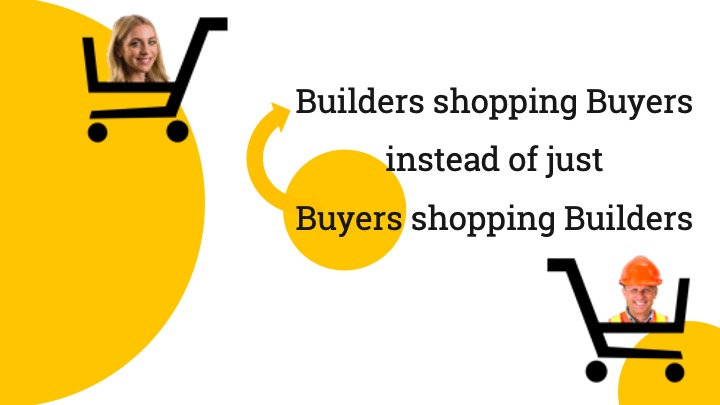A New Go of New Home Sales!
with John and Anya
Episode 6, January 25, 2022
We've Been Doing It All Backwards! The New E-Commerce Business Model
We’re entering this whole new eCommerce business model and it is changing everything that we’ve been taught as marketers. This is a little controversial, but it’s good to be aware of this other perspective.
We’re entering this whole new eCommerce business model and it is changing everything that we’ve been taught as marketers. This is a little controversial, but it’s good to be aware of this other perspective.
We’ve been talking a lot about Martech-combination of traditionally separate functions- marketing and technology. Here’s the dilemma. Does a marketing company become a tech company or does a tech company become a marketing company? This is where we have it all a little bit backward.
We started off with marketing in this this industry; as technology evolved, marketing companies became tech companies.
We're entering a phase here where technology is so complex, so pervasive and overwhelming that it may necessitate tech companies becoming marketing companies.
Just to use Madison Avenue in New York City as an example- which has been the headquarters and the dynasty of advertising companies for decades. They were quickly replaced in the last couple of decades by advertising tech giants like Facebook, Google, and Amazon.
We have to recognize as builders that the days of seller centric marketing approach are over in the online world.
We need to move to a buyer-centric approach. E-commerce shifts the power from the seller to the buyer.
The sellers do not have to go to your place, and they have the luxury of being just a click away from going to your competitor or other options. They are not limited by time place, device or people. They have everything literally at their fingertips, so to force them to go down your traditional sales funnel is not going to work.
The online sales funnel is the reverse of the offline sales funnel. In the online world it brings the seller to the buyer.
Don't make me come to you, bring your product to me anytime, anywhere, and anyhow.
The experience of buying new construction in the middle of a farm field or swamp land, driving in the middle of nowhere, taking your whole family along for the weekend-it’s not a fun experience. So we need to turn that around, bring the product to them and meet them where they are.
The other aspect about today’s shoppers is they’re more connected to anyone else than in any other generation, but they don’t necessarily need to connect in person with a handshake or meet salespeople at the store. They want to do more on their own.
So basically don't contact me. I'll contact you when I need you, because today's online shoppers versus in person shoppers- they're more DIY, they're comfortable doing it themselves.

They like the control, and they want to shop on their own time and in their own way. That’s why options such as self-touring are becoming more popular among the consumers. Buyers still want to touch, feel, and smell to make sure that what they saw online matches what’s there, but they really don’t want a salesperson there-until they’re ready. From a salesperson’s perspective, technology will provide them with fewer, but better leads.
Traditional marketing hands off leads to sales taking them off-line. Now sales need to sift through dozens of leads just to sell one home. But if you leave them alone for a while-let them explore, let them go down that sales funnel so when they meet you-they’ve been self-qualified and now instead of asking you one thousand impossible questions-they ask just a few. Don’t scare them off by approaching them too fast. It’s a lot harder to persuade someone than to have them already convinced. It’s a lot happier sell because they see you as facilitator of that transaction, as opposed to a negotiator in a wheel and deal type of an environment.
So allow them to stay online as long as they want to, instead of rushing to take them off.
Traditionally builders use presentation marketing, and they use generic content to basically give an idea of what they have to offer in product, lifestyle, community. It may be okay in an experience where you’re ushering them to go visit you.
In e-commerce where marketing and sales converge to close the entire transaction online, you need to provide them with interactive experience not static images.
If you only send out static stuff, not only is there not engagement, but there’s no way to capture how long they were there, what they were looking at, did they continue on in their journey? Did they stop? Did they register? Did they check out? How does that compare to other builders’ analytics? How does that compare against industry trends? How does that help you with market research, what price points are most popular, which lots are most popular? Data is gold, but that only happens when you give them an interactive experience.
We’ve been very website centric for the last twenty years. We’re starting to realize as other digital channels appearing that they are much more customer friendly. You can transact, you can even design and visualize and you can pick up where you left off. No matter if you began in the sales center, on builder’s website, through email campaign or else-you are not beholden and trapped to a web centric approach.

We’ve seen channel evolution in other industries-take Facebook or Amazon, both look like a website-but they’re actually web apps. The way these tech giants connect with consumers is through content and channels. Creating the content only gets you so far, you must get the content to the people in the way that will connect. They give that personalized experience in their channel. You only see the friends that you want to see or products related to your search. That’s the way the modern websites should be. It should be dynamically changing around that buyer, so everything is meaningful. We must make our marketing resonate, meaningful, engaging, so it can take them to the next step in this online sales journey.
Another backwards thing, is that new construction buyers are forced to do manual searches. In this day and age of Match.com and Uber and Netflix, consumers are used to putting in their criterion and then being matched naturally. They don’t even have to think about going in and searching for things. It will just notify them wherever they are, of whatever match is.
Builders spend a lot of money trying to attract a large audience, but then even more money and time trying to figure out who are the good, bad and ugly leads. Reality is, you probably spend most of your time on the ugly leads. Why wouldn’t you use a match and notify system instead? Builders can specify the characteristics of their ideal client and get matched with a few leads that fit that criterion instead of dozens that may not be a good match.
Builders should be shopping buyers, instead of just buyers shopping builders, not every lead for a builder is a good lead.

eCommerce enables access directly to the consumer, streamlining of marketing and sales function. Streamline the marketing and sales process so that the buyer can do more on their own.
PRESENTATION SLIDES
Email Me New Episodes
Join our private email list to receive reminders of new episode releases, exclusive content and market insights. Your contact information will not be shared with others and you can unsubscribe at any time.
We welcome everyone – whether you are a customer, competitor, partner or just interested in our New Homes industry. We hope that together, we can enlighten ourselves, strengthen our relationships, grow our industry and better service our customers.
Follow Anewgo on LinkedIn




